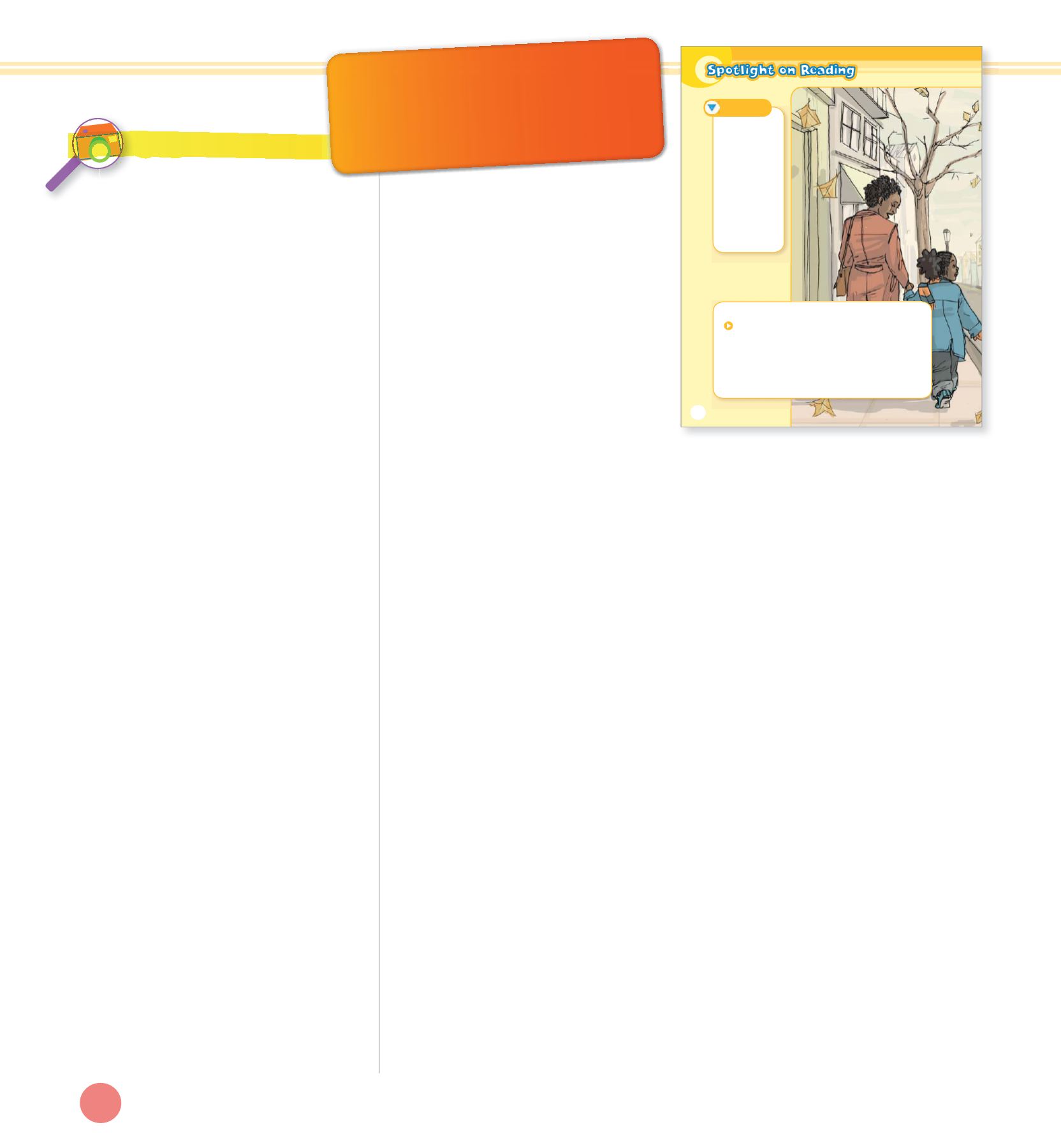

Beyond Words
LITERARY RESPONSE
Ask students to examine the illustration on pages 112–113. Tell them to pay close
attention to the features and details they notice. Have them look for characters
in the picture, notice where the characters are, what the characters are doing,
and other details in the picture. Distribute copies of the 4-Column Chart Graphic
Organizer to each student. Draw the chart on the board with the headings
Character, Setting, Situation, and Vocabulary. Have students identify one response
for each column.
Q
Who are the people, or characters, in the picture?
Q
Where are these characters?
Q
What year do you think it is in this picture?
Q
What detail do you notice about the setting?
Have the class brainstorm other ideas about the setting. Remind them to use
details from the picture to determine where and when the setting is. Ask
volunteers to share what they have written in their chart. Write responses in
the chart on the board.
Unit 4
My Community
112
Spotlight on Reading
$
( " #
" $
38<*7 9-* 6:*89.438 .3 (4251*9* 8*39*3(*8
#-&9 )4*8 9-* 9.91* 9*11 >4: 9-* 8947> 2.,-9 '* &'4:9
#-4 )4 >4: 9-.30 9-* 5*451* .3 9-* 5.(9:7* &7*
#-&9 )4 >4: 9-.30 9-*> <.11 )4 .3 9-* 8947>
#-&9 )4 9-* 0*> <47)8 9*11 >4: &'4:9 <-&9 2.,-9
-&55*3 .3 9-* 8947>
97&.3 89&9.43
9-*&9*7
1.'7&7>
9473 )4<3
-.8947>
94<3 -&11
2&>47
(422:3.9>
14(&1
5&9741
97&+A(
7*5479*7
derstanding the elements pertinent to
image that accompany a text can help
students understand and visualize what they
are reading. There are times when the words
on the page are insufficient to convey the
intended meaning efficiently. Visual images
sometimes convey the information that the
words alone cannot. When asking students
to read an image, first have them look at the
entire image for a few minutes on their own.
Then, have them talk about the elements
that they can identify in the image. Other
details in the image can then be identified
and discussed as vocabulary words related to
the text.
In an informational text, the visual
elements on the page are intended to be
instructive. They can be graphs, charts,
photos, illustrations, or diagrams that offer
supplemental, supporting, or clarifying
information.
In a fictional text, the photographs can help
readers to understand the characters, the
setting, and the theme of a story better.
In these cases, the photo or illustration is
also intended to be instructive, but more as
support than as supplemental information.
It can also provide clues as to what might
happen next in the story.
In the Reading an Image sections that follow,
questions are provided that will help you
focus your students’ attention on specific
elements of the images on each spread.
an
Un
How to Read an Image
Reading an Image
activities are used
throughout the Spotlight on Reading lessons
to help students make connections and help
develop reading comprehension.


















